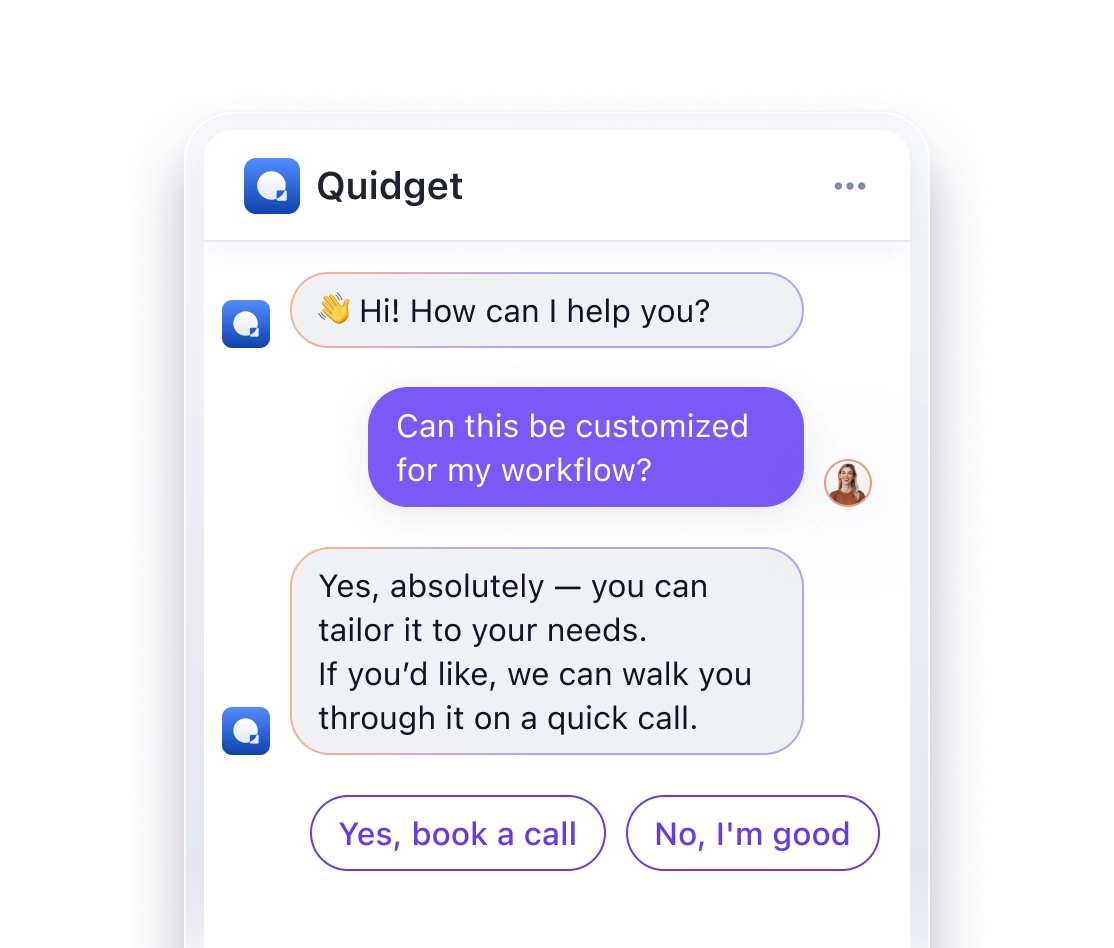The Ultimate Botpress Comparison Guide: Open-Source vs. No-Code Chatbots
Choosing between open-source and no-code chatbot platforms depends on your team’s technical skills, customization needs, and deployment timeline. Here’s a quick breakdown:
- Open-Source Platforms (e.g., Botpress, Rasa): Ideal for teams with coding expertise. They offer full control, extensive customization, and self-hosting options but require more time and resources for development and maintenance.
- No-Code Platforms (e.g., Chatbase, Landbot): Perfect for non-technical teams. They prioritize ease of use and quick setup with visual tools and pre-built templates but may have limited customization options.
Quick Comparison
| Feature | Open-Source Platforms | No-Code Platforms |
|---|---|---|
| Technical Expertise | Requires programming skills | Minimal technical knowledge |
| Customization | Unlimited via code | Limited to built-in features |
| Development Time | Weeks to months | Hours to days |
| Deployment Options | Self-hosted/Cloud | Cloud-based only |
| Maintenance | Managed by in-house team | Handled by the platform |
For businesses needing advanced customization and full control, open-source platforms like Botpress are a great fit. For teams seeking simplicity and faster deployment, no-code platforms are a better choice. Keep reading for detailed comparisons of Botpress against top alternatives like Rasa, Dialogflow, and more.
Botpress vs VoiceFlow vs Chatbot Builder AI in 2024
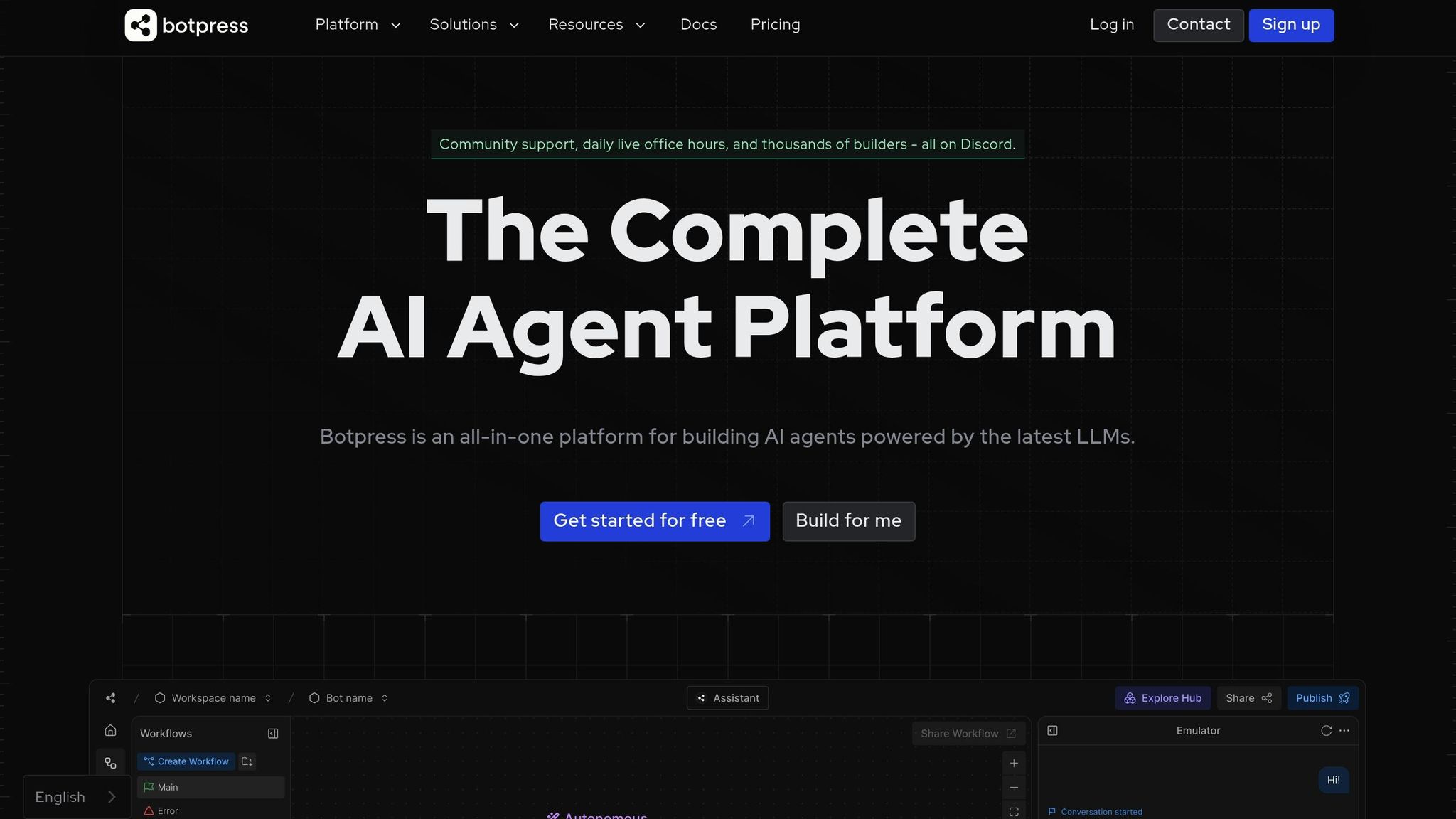
Open-Source vs. No-Code Chatbots: Basic Differences
Open-source and no-code chatbots differ in terms of technical skills, customization options, and integration methods.
Technical Requirements
Open-source platforms demand coding knowledge for customization, while no-code platforms rely on visual tools, making them accessible to non-technical users.
| Aspect | Open-Source Platforms | No-Code Platforms |
|---|---|---|
| Technical Expertise | Requires programming skills | Minimal technical knowledge |
| Development Time | Weeks to months | Hours to days |
| Customization Level | Unlimited via code | Limited to built-in features |
| Maintenance | Managed by in-house team | Handled by the platform |
| Integration Options | Highly flexible and extensive | Pre-built connectors available |
These technical differences play a big role in how much control you have over your chatbot’s features.
Customization Capabilities
With open-source tools, you can tweak everything – from conversation flows to backend integrations – by modifying the code. No-code platforms, on the other hand, focus on simplicity, offering pre-designed templates and features that work within their built-in tools.
"The most convenient Conversational AI platform with low-code capabilities" – Naveen K, Software Development Engineer, Pharmaceuticals
Development Process
- Setup: Open-source requires setting up servers and managing dependencies. No-code platforms provide instant access through a web-based interface.
- Testing & Deployment: Open-source solutions need manual testing and deployment processes. No-code platforms streamline this with built-in testing tools and one-click deployment.
- Maintenance: Open-source updates must be handled manually, while no-code platforms manage updates automatically.
"True to their premise, they make Chatbot implementation easy and low-code." – Director, Insurance
The development process also impacts how easily your chatbot can connect with other systems.
Integration Flexibility
Open-source platforms allow for custom integrations through coding, giving you greater control. No-code platforms simplify the process with pre-built connectors, making setup faster and easier.
Choosing between open-source and no-code platforms comes down to your technical capabilities and how much customization you need.
1. Botpress vs Rasa: Open-Source Features
Botpress and Rasa take different approaches to development and technical implementation.
Development Environment
| Feature | Botpress | Rasa |
|---|---|---|
| Programming Language | JavaScript/Node.js | Python |
| Development Interface | Visual Flow Editor + Code | Code-First Only |
| Learning Curve | Moderate | Steep |
| Deployment Options | Self-hosted/Cloud | Self-hosted/Cloud |
| Version Control | Git Integration | Native Git Support |
Next, let’s break down their natural language processing capabilities.
Natural Language Processing
Botpress uses a combination of rule-based and machine learning models, offering built-in NLP features for intent classification and entity extraction. Its native NLU engine handles these tasks automatically.
Rasa, on the other hand, provides a customizable NLP pipeline with features like:
- Custom NLU pipeline configurations
- Support for multiple languages
- Advanced context management
- Flexibility in training machine learning models
Development Workflow
Botpress leans on visual tools but also allows coding when needed:
- Design conversation flows with a visual editor
- Write custom actions in JavaScript
- Use code to integrate external APIs
- Debug conversations in real-time
Rasa requires a hands-on, code-first approach:
- Define conversation flows in YAML files
- Create custom actions using Python
- Configure the NLU pipeline directly in code
- Test bot functionality via command-line tools
Integration Capabilities
| Integration Type | Botpress | Rasa |
|---|---|---|
| Messaging Platforms | Prebuilt connectors | Custom channel connectors |
| Database | Built-in SQLite | Supports multiple databases |
| API Integration | REST API + Webhooks | REST API + Custom Actions |
| Authentication | Basic + OAuth | Custom implementation |
Resource Requirements
| Resource | Botpress | Rasa |
|---|---|---|
| Minimum RAM | 2GB | 4GB |
| Storage | 1GB | 2GB |
| CPU Cores | 2 | 2 |
| Container Support | Docker ready | Docker/Kubernetes |
Development Time Investment
The time required depends on project complexity:
| Project Type | Botpress | Rasa |
|---|---|---|
| Simple Bot | 2-3 days | 4-5 days |
| Medium Complexity | 1-2 weeks | 2-3 weeks |
| Enterprise Grade | 4-8 weeks | 6-12 weeks |
If you prefer a mix of visual tools and coding, Botpress is a great choice. For projects demanding full control over the NLP pipeline, Rasa is better suited.
2. Botpress vs Chatbase: Code vs. No-Code
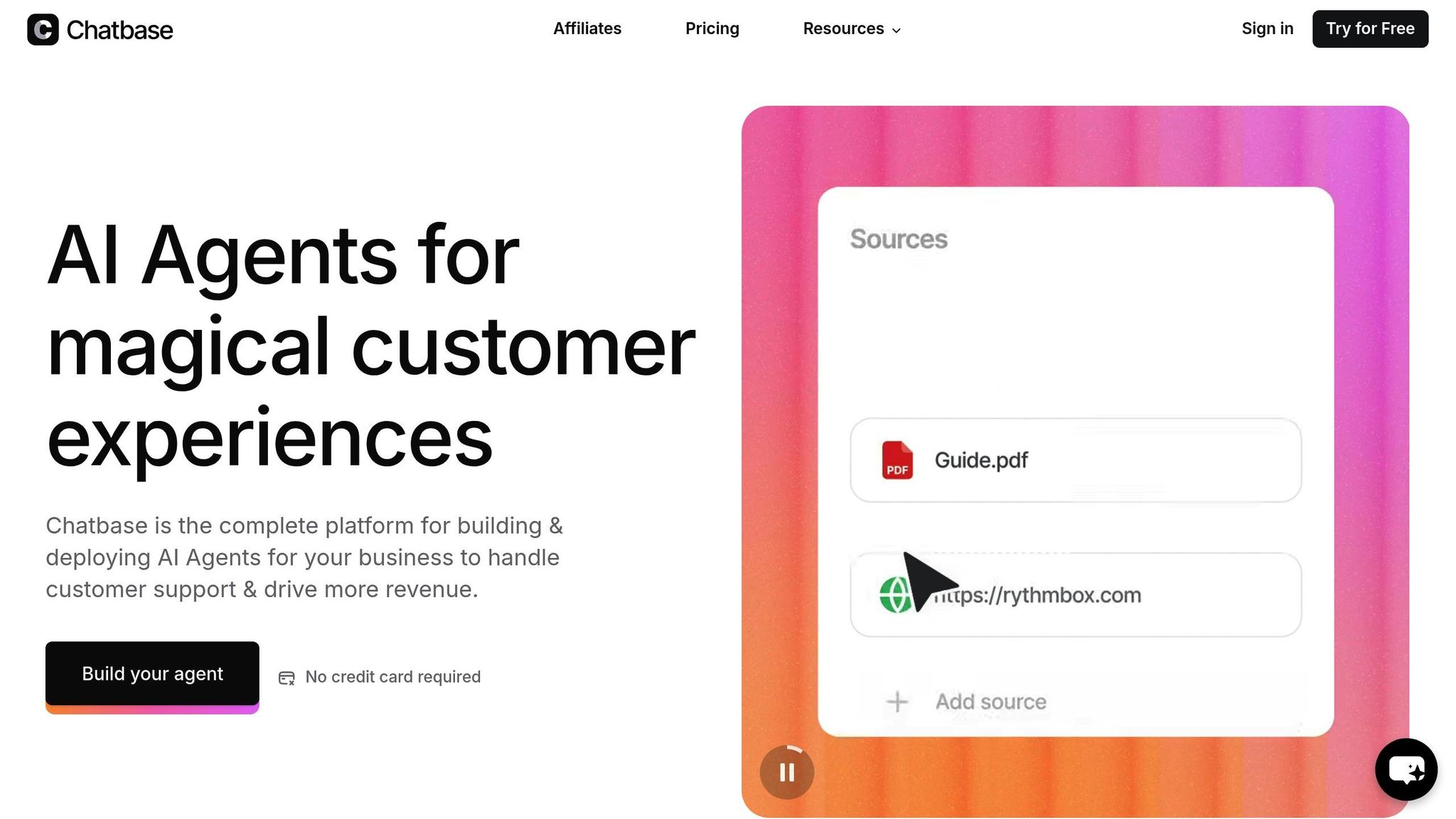
Development Approach
| Feature | Botpress | Chatbase |
|---|---|---|
| Primary Interface | Combines a visual flow editor with code support | Uses a visual builder |
| Technical Skills | Requires JavaScript/Node.js skills | For non-technical users |
| Customization Level | Offers full code access for detailed modifications | Relies on a template-based setup |
| Setup Time | Needs manual setup | Focuses on quicker deployment |
| Hosting Options | Supports both self-hosted and cloud setups | Cloud-only option available |
Development Process
Botpress supports both visual design and in-depth code-based customization. Teams can write JavaScript to create custom middleware and features. Chatbase, on the other hand, uses a template-driven approach, making it accessible for users without technical expertise. Let’s break down how these platforms handle server setup, maintenance, and scaling.
Infrastructure Management
| Aspect | Botpress | Chatbase |
|---|---|---|
| Server Setup | Requires manual configuration and team involvement | Fully managed service |
| Maintenance | Handled by your in-house team | Automated by the platform |
| Scaling | Relies on your server setup | Automatically adjusts to demand |
| Updates | Requires manual updates | Delivered automatically |
| Backup | Managed by your team | Includes built-in backup features |
Resource Requirements
Botpress demands a team skilled in JavaScript, DevOps, database management, and server administration. Chatbase significantly reduces technical requirements with its managed, no-code platform.
These differences also influence how each platform performs.
Performance Considerations
With Botpress, performance depends heavily on your server configuration and message processing setup. Chatbase leverages its cloud infrastructure to scale resources automatically based on demand.
Security Implementation
| Security Feature | Botpress | Chatbase |
|---|---|---|
| Authentication | Requires custom implementation | Built-in feature |
| Data Encryption | Set up manually by your team | Enabled automatically |
| Access Control | Configurable, role-based options | Pre-configured settings included |
| Compliance | Handled through your own processes | Managed by the platform |
These distinctions reveal how the platforms differ in technical management, which can influence their suitability for different business needs.
Training and Support
| Resource Type | Botpress | Chatbase |
|---|---|---|
| Documentation | Offers detailed technical guides | Provides user-friendly visual guides |
| Support | Community forums for troubleshooting | Direct access to support |
| Learning Curve | Requires more time to learn | Built for faster onboarding |
| Updates | Must be reviewed and applied manually | Automatically delivered |
3. Botpress vs Dialogflow: NLP Features

Let’s dive into how Botpress and Dialogflow stack up when it comes to their NLP features.
Core NLP Architecture
| Feature | Botpress | Dialogflow |
|---|---|---|
| Language Model | Uses a modular NLU pipeline | Relies on cloud-based machine learning |
| Intent Recognition | Combines rule-based and machine learning | Leverages deep learning models |
| Entity Extraction | Requires custom training | Includes pre-built and custom entities |
| Context Handling | Uses explicit context management | Built-in context system |
| Language Support | Supports multiple languages | Covers a wide range of languages |
Intent Processing
Botpress uses a mix of pattern matching and machine learning for intent recognition. It tokenizes user inputs and compares them to trained models, but this often requires manual setup.
| Feature | Details |
|---|---|
| Intent Matching | Neural network–based matching |
| Training Data | Needs fewer examples |
| Response Time | Optimized for quick cloud responses |
| Accuracy Threshold | Configurable for precision |
| Context Retention | Maintains context for longer interactions |
Entity Recognition
Botpress requires developers to manually define and train entities, giving them more control but at the cost of extra effort. Dialogflow, on the other hand, comes with ready-to-use system entities, simplifying setup. Here are some common entity types:
| Entity Type | Recognition Details |
|---|---|
| Dates | Detects various formats and ranges |
| Numbers | Differentiates numerical forms |
| Amounts | Identifies currencies and quantities |
| Locations | Recognizes cities, countries, and addresses |
| Names | Detects people and organizations |
Language Understanding
The platforms also differ in how they handle broader language tasks:
| Capability | Botpress | Dialogflow |
|---|---|---|
| Small Talk | Requires manual setup | Includes pre-built responses |
| Sentiment Analysis | Basic scoring | Advanced sentiment evaluation |
| Multi-Language Support | Needs separate configurations | Built-in multi-language support |
| Spelling Correction | Minimal support | Built-in correction features |
| Synonyms Handling | Manual setup required | Automatically detects synonyms |
Training Requirements
The training needs for each platform vary significantly:
| Training Aspect | Botpress | Dialogflow |
|---|---|---|
| Intent Examples | Requires multiple variations | Needs fewer examples |
| Entity Samples | Requires several samples | Often pre-configured |
| Context Rules | Must be explicitly defined | Automatically configured |
| Response Templates | Manually created by developers | Can use pre-configured options |
Processing Speed
Performance depends on the platform’s infrastructure, with notable differences:
| Metric | Botpress | Dialogflow |
|---|---|---|
| Response Time | Varies by server configuration | Optimized for cloud performance |
| Concurrent Users | Limited by self-hosted resources | Scales automatically via the cloud |
| Processing Limits | Based on hardware capabilities | Free tier limits; premium options available |
| Batch Processing | Requires manual setup | Built-in features included |
Integration Capabilities
Both platforms offer integration options, but their approaches differ:
| Integration Type | Botpress | Dialogflow |
|---|---|---|
| API Access | REST APIs and WebSocket | REST and gRPC-based interfaces |
| Custom Actions | JavaScript functions | Webhook calls |
| Analytics | Basic metrics | Detailed insights |
| Export Options | JSON format | Multiple formats supported |
| Version Control | Git-based integration | Built-in versioning tools |
These differences highlight how Botpress and Dialogflow tackle natural language understanding, shaping their fit for different development needs and scenarios.
4. Botpress vs IBM Watson: Enterprise Options
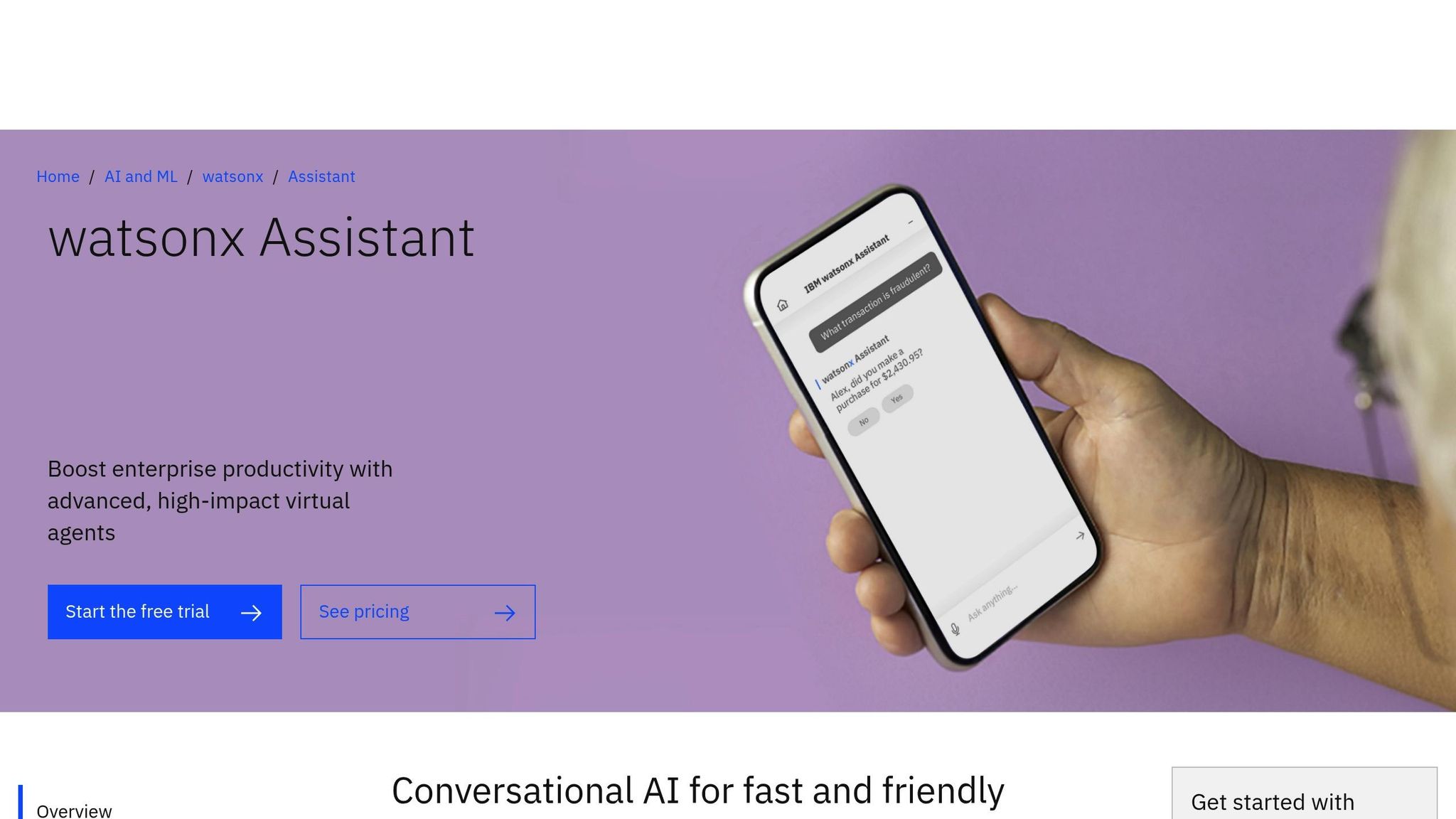
This section dives into how Botpress and IBM Watson stack up in enterprise settings. For organizations needing scalable, secure, and compliant chatbot solutions, enterprise features play a major role in the decision-making process.
Enterprise Architecture
| Feature | Botpress | IBM Watson |
|---|---|---|
| Deployment | Self-hosted or cloud | Cloud-first, hybrid options |
| Scalability | Manual scaling | Auto-scaling |
| Security | Basic enterprise | Advanced enterprise-grade |
| Data Privacy | On-premises control | IBM Cloud framework |
| Availability | Manual configuration | Built-in redundancy |
Development Environment
Botpress relies on modular JavaScript for customization, offering full control but requiring manual configuration. IBM Watson, on the other hand, focuses on a visual development approach with pre-built components, making it easier to integrate into enterprise workflows.
| Development | Botpress | IBM Watson |
|---|---|---|
| Code Access | Full source code | API and UI tools only |
| Customization | JavaScript/Node.js | Watson Assistant tools |
| Testing | Basic framework | Complete test suite |
| Version Control | Git integration | Native versioning |
| CI/CD | Manual setup | Built-in DevOps |
Enterprise Integration
The integration capabilities of these platforms reflect their differing architectures and priorities.
| Integration | Botpress | IBM Watson |
|---|---|---|
| API Gateway | REST API | Multiple protocols |
| SSO | LDAP, OAuth | Full enterprise IAM |
| Databases | SQL support | Multiple connectors |
| Legacy Systems | Custom adapters | Pre-built connectors |
| Middleware | Basic support | Enterprise service bus |
Performance Monitoring
| Monitoring | Botpress | IBM Watson |
|---|---|---|
| Analytics | Basic metrics | Advanced insights |
| Error Tracking | Manual logs | Automated tracking |
| Resource Usage | Server metrics | Cloud analytics |
| User Behavior | Basic logs | Detailed analytics |
| Alerts | Manual setup | Built-in system |
Compliance and Security
Security and compliance are critical for enterprise solutions, and these platforms differ significantly in their offerings.
| Security | Botpress | IBM Watson |
|---|---|---|
| Encryption | Basic | Enterprise-grade |
| Audit Trails | Limited | Comprehensive |
| Access Control | Role-based | Fine-grained |
| Compliance | Basic certs | Multiple standards |
| Data Residency | Self-managed | Regional centers |
Resource Requirements
| Resource | Botpress | IBM Watson |
|---|---|---|
| Infrastructure | Self-managed | Cloud-managed |
| Dev Team | Full team | Minimal staff |
| Maintenance | DevOps team | Managed service |
| Training | Custom docs | IBM resources |
| Support | Community | Enterprise-level |
Cost Structure
| Cost Factor | Botpress | IBM Watson |
|---|---|---|
| License | Per instance | Per user/conversation |
| Infrastructure | Self-hosted costs | Cloud fees |
| Support | Extra cost | Included |
| Training | Custom training | IBM certification |
| Maintenance | Internal costs | Subscription |
These comparisons highlight Botpress’s self-hosted flexibility versus IBM Watson’s fully managed enterprise experience, making them suitable for different business needs and priorities.
5. Botpress vs Chatwoot: Support Functions
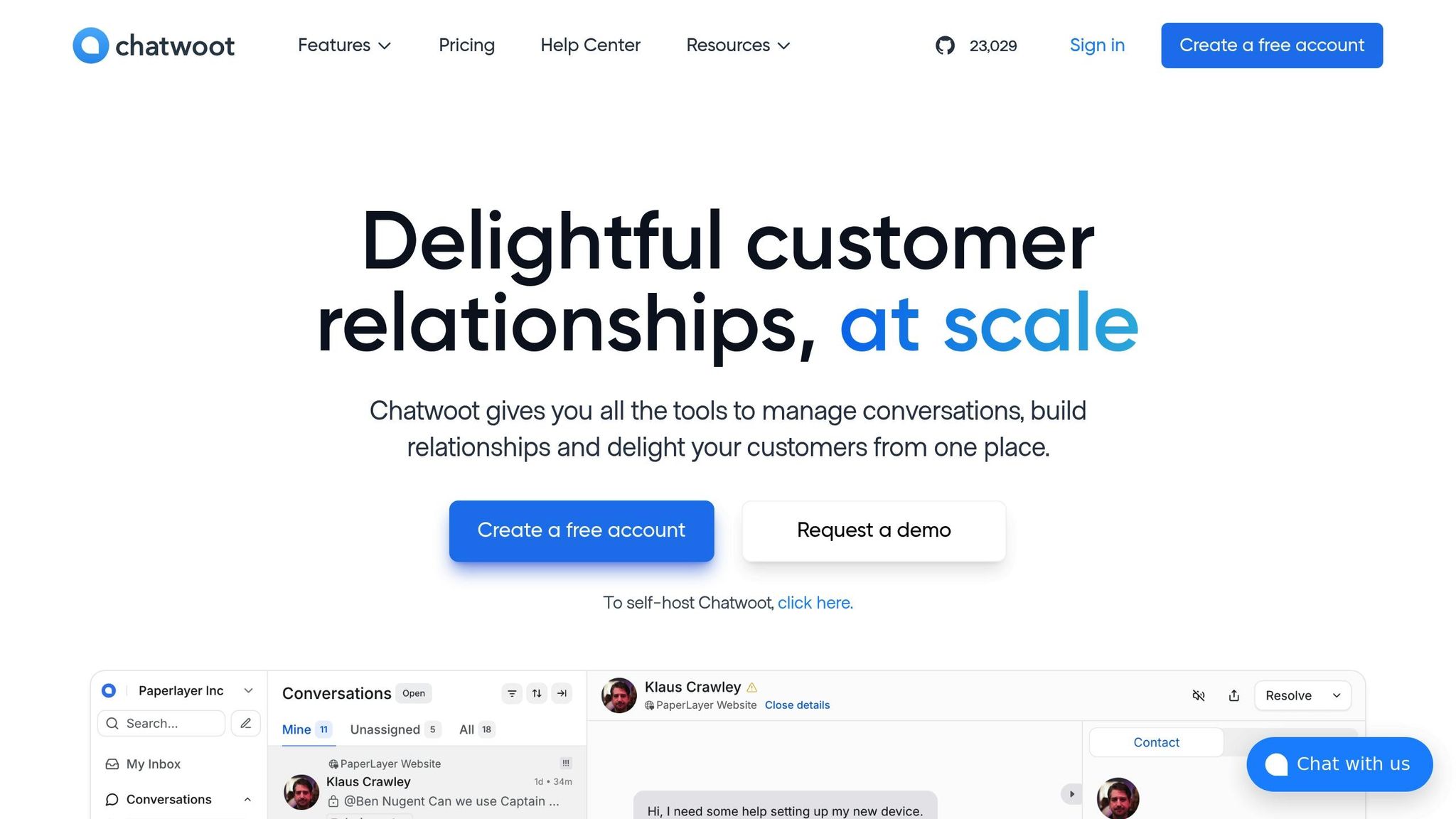
Core Support Capabilities
| Feature | Botpress | Chatwoot |
|---|---|---|
| Live Chat | Standard integration | Native solution |
| Team Inbox | Minimal | Unified inbox |
| Ticket Management | Manual setup | Built-in system |
| Auto-Assignment | Basic rules | Smart routing |
| Response Templates | Custom only | Pre-built + custom |
| Multi-Channel | Limited | Comprehensive |
| Analytics | Basic metrics | Advanced reporting |
These key differences highlight how each platform handles support tasks, setting the stage for a deeper dive into conversation management.
Conversation Management
Botpress focuses on automation but requires additional setup for human handoffs. Its node-based conversation flow demands manual configuration for support workflows.
| Workflow Feature | Botpress | Chatwoot |
|---|---|---|
| Queue Management | Manually configured | Automated |
| Priority Handling | Basic rules | Smart prioritization |
| Conversation History | Limited storage | Complete archive |
| Customer Context | Basic info | Rich profiles |
| Team Collaboration | Limited | Built-in tools |
Agent Experience
The tools available to support agents can significantly impact their efficiency and effectiveness.
| Agent Tools | Botpress | Chatwoot |
|---|---|---|
| Dashboard | Developer view | Support-focused |
| Response Time | Manual tracking | Real-time metrics |
| Knowledge Base | Custom setup | Integrated |
| Workload Distribution | Basic | AI-assisted |
| Training Tools | Developer docs | Agent resources |
Automation Features
Automation is critical for streamlining support workflows, and the platforms differ in their approach.
| Automation | Botpress | Chatwoot |
|---|---|---|
| Auto-Responses | Flow-based | Rule-based |
| Tagging | Manual | Automated |
| Routing Logic | Basic rules | Smart routing |
| SLA Monitoring | Custom setup | Built-in |
| Canned Responses | Limited | Extensive library |
Integration Capabilities
The ability to connect with other tools is another area where the platforms show distinct approaches.
| Integration Type | Botpress | Chatwoot |
|---|---|---|
| CRM Systems | Custom API | Direct connectors |
| Help Desk | Manual setup | Native integration |
| Social Channels | Limited | Multi-channel |
| Email Support | Basic | Full integration |
| Analytics Tools | Custom export | Integrated reports |
Support Metrics
Each platform offers different tools for tracking and improving support performance.
| Metric Type | Botpress | Chatwoot |
|---|---|---|
| Response Time | Basic tracking | Detailed analysis |
| Resolution Rate | Manual calculation | Automated tracking |
| Customer Satisfaction | Limited tools | Built-in surveys |
| Agent Performance | Basic stats | Comprehensive KPIs |
| Channel Analytics | Limited | Cross-channel data |
Data Management
| Data Feature | Botpress | Chatwoot |
|---|---|---|
| Storage Options | Self-hosted | Cloud/self-hosted |
| Export Tools | CSV only | Multiple formats |
| Backup Systems | Manual | Automated |
| Data Retention | Configurable | Policy-based |
| Access Control | Basic RBAC | Advanced permissions |
These comparisons showcase Botpress’s developer-focused environment versus Chatwoot’s out-of-the-box approach, catering to different business requirements.
sbb-itb-58cc2bf
6. Botpress vs Landbot: No-Code Tools
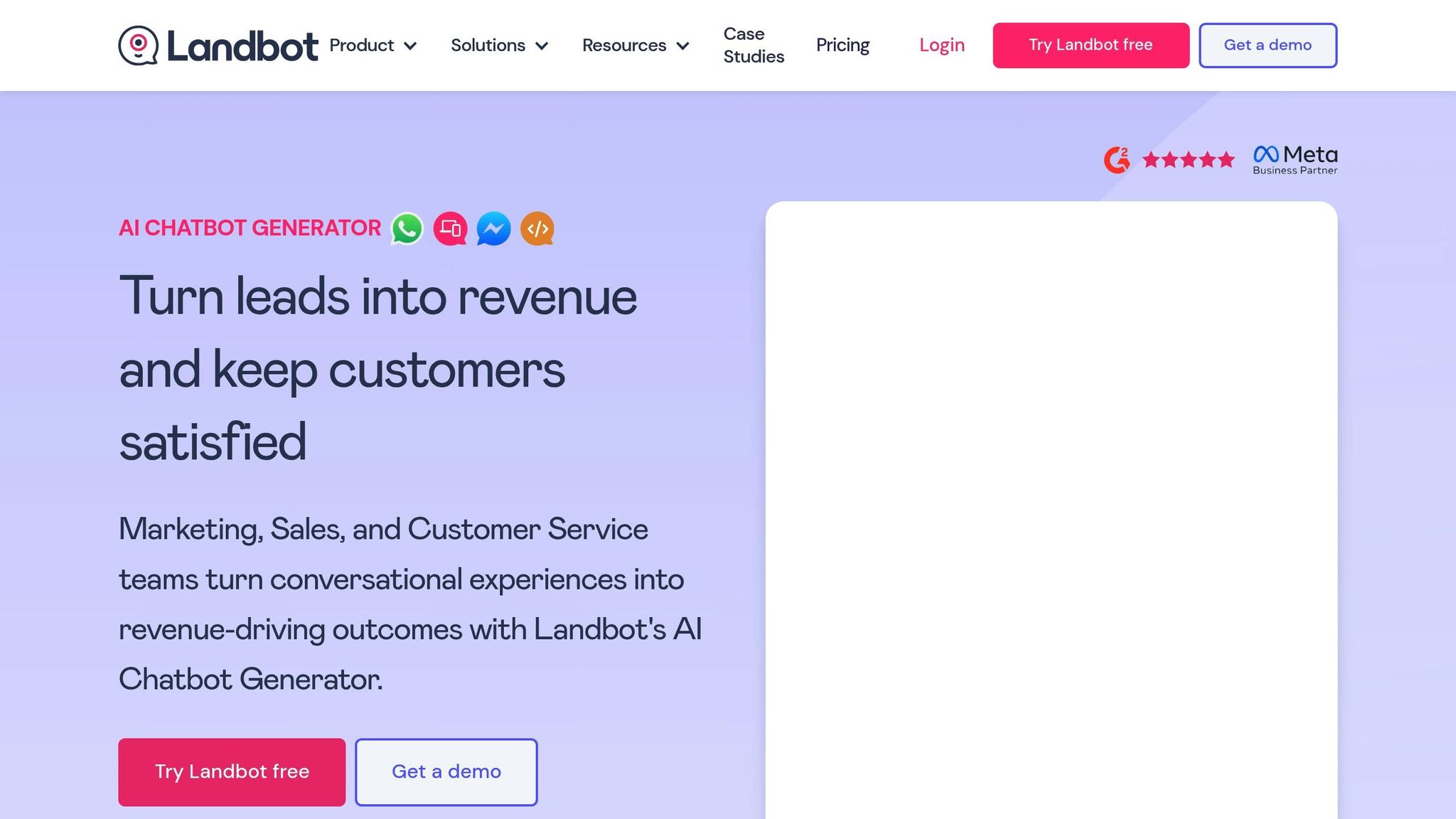
This section breaks down how Botpress and Landbot differ in their approaches, focusing on technical features versus user-friendly, no-code functionality.
Visual Builder Comparison
| Feature | Botpress | Landbot |
|---|---|---|
| Interface Type | Flow-based editor | Visual block builder |
| Learning Curve | Moderate | Low |
| Templates | Few | Extensive library |
| Custom Logic | Node-based | Block-based |
| Preview Mode | Basic | Real-time |
| Version Control | Git-based | Built-in history |
| Collaboration | Single user | Team features |
Conversation Design Tools
| Design Elements | Botpress | Landbot |
|---|---|---|
| Message Types | Text, buttons | Rich media options |
| Input Validation | Manual | Pre-built rules |
| Conditional Logic | Code required | Visual conditions |
| A/B Testing | Custom | Native support |
| User Variables | Technical setup | Drag-and-drop |
| Dynamic Content | JSON format | Visual editor |
Integration Framework
| Integration Type | Botpress | Landbot |
|---|---|---|
| API Connections | Custom code | No-code builder |
| Webhooks | Manual | Visual config |
| Database Links | Code required | Direct connect |
| File Handling | Basic upload | Media library |
| Custom Scripts | Full access | Limited options |
Data Collection Features
| Feature | Botpress | Landbot |
|---|---|---|
| Form Builder | Basic fields | Advanced forms |
| Data Validation | Manual rules | Pre-built checks |
| Storage Options | Local/Cloud | Cloud-based |
| Export Tools | API-based | One-click export |
| Field Types | Standard | Rich formats |
Testing Environment
| Testing Feature | Botpress | Landbot |
|---|---|---|
| Debug Mode | Developer tools | Visual debugger |
| Test Cases | Manual | Scenario builder |
| Error Handling | Code-level | Visual alerts |
| Performance Stats | Basic metrics | Detailed analytics |
| User Simulation | Limited | Interactive testing |
Deployment Options
| Deployment Type | Botpress | Landbot |
|---|---|---|
| Hosting | Self/Cloud | Cloud only |
| Channel Support | Few | Multi-channel |
| Custom Domain | Available | Premium only |
| SSL Setup | Manual | Automatic |
| Scaling Options | Manual | Auto-scaling |
Visual Customization
| Design Element | Botpress | Landbot |
|---|---|---|
| Theme Editor | Basic CSS | Visual designer |
| Brand Colors | Manual | Color picker |
| Layout Options | Few | Flexible grid |
| Mobile Preview | Basic | Responsive design |
| Custom CSS | Full access | Template-based |
Botpress leans heavily on technical skill for customization, while Landbot prioritizes simplicity and speed with its visual tools. Your choice depends on whether you need advanced customization or a quick, user-friendly setup.
7. Botpress vs Microsoft Bot Framework: Technical Setup
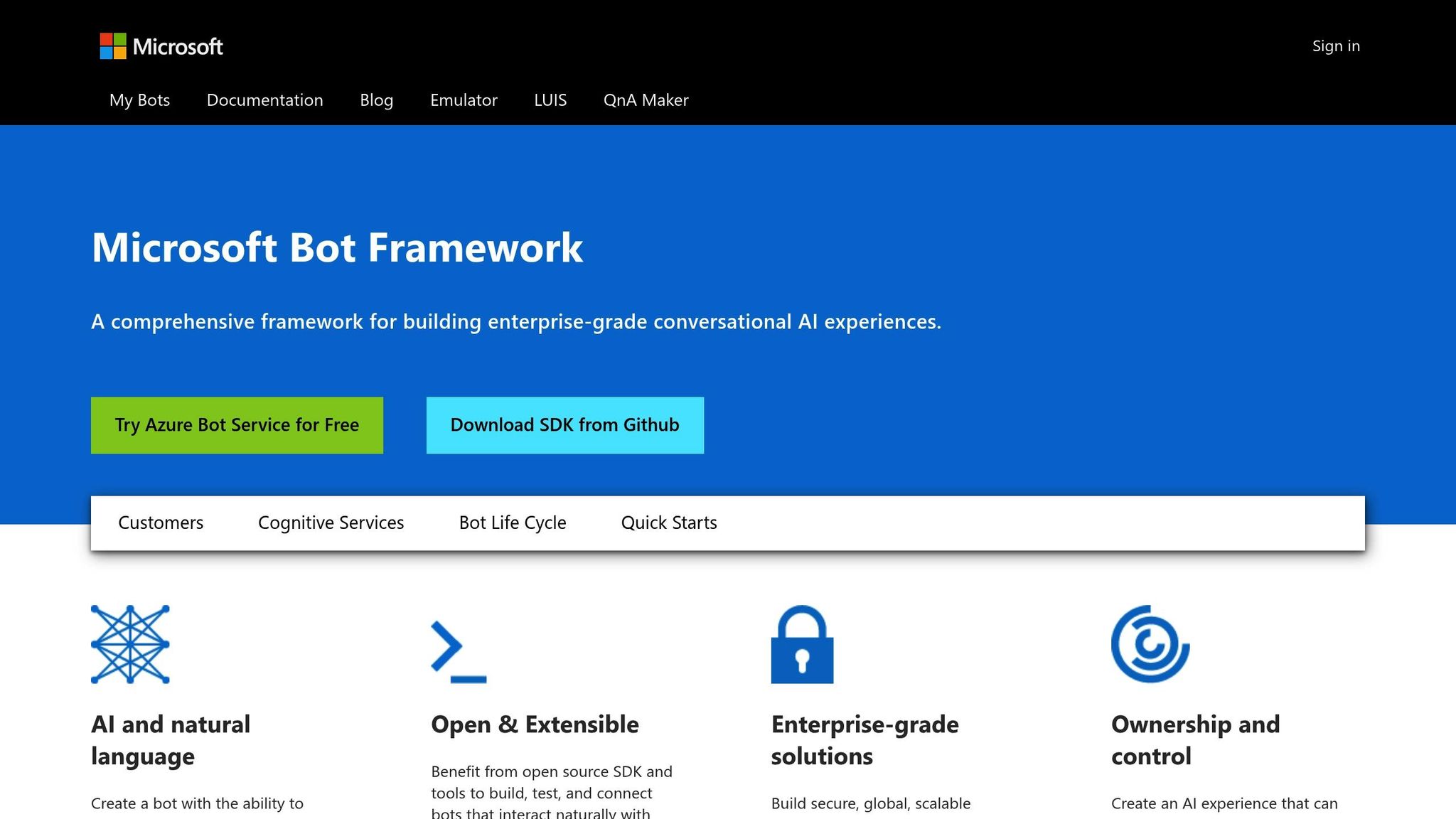
Development Environment
| Feature | Botpress | Microsoft Bot Framework |
|---|---|---|
| Primary Language | JavaScript/TypeScript | C#/.NET/Node.js |
| IDE Support | VS Code, WebStorm | Visual Studio, VS Code |
| Local Setup | Docker container setup | SDK installation |
| Version Control | Git integration | Azure DevOps/Git |
| Testing Tools | Built-in debugger | Bot Framework Emulator |
Architecture Components
| Component | Botpress | Microsoft Bot Framework |
|---|---|---|
| Core Engine | Node.js runtime | .NET Core/Node.js |
| State Management | Memory/Database | Azure Cosmos DB |
| NLP Processing | Built-in NLU | LUIS/QnA Maker |
| Middleware | Custom hooks | Bot Builder SDK |
| Scalability | Manual configuration | Azure auto-scale |
Enterprise Integration
| Integration Type | Botpress | Microsoft Bot Framework |
|---|---|---|
| Authentication | OAuth/Custom | Azure AD/OAuth |
| Security Protocols | HTTPS/WSS | Enterprise-grade |
| Data Storage | PostgreSQL/Redis | Azure Services |
| Monitoring | Basic metrics | Application Insights |
| Compliance | Self-managed | Azure Compliance |
Deployment Configuration
| Feature | Botpress | Microsoft Bot Framework |
|---|---|---|
| Cloud Options | Any cloud provider | Azure-optimized |
| Container Support | Docker images | Azure Container Service |
| CI/CD Pipeline | Manual setup | Azure Pipelines |
| Environment Management | Manual configs | Azure App Service |
| SSL Certificates | Manual setup | Azure-managed |
Development Tools
| Tool Type | Botpress | Microsoft Bot Framework |
|---|---|---|
| Code Editor | Flow editor + IDE | Visual Studio tools |
| Debugging | Browser-based | Bot Framework Emulator |
| Analytics | Simplified dashboard | Power BI integration |
| Documentation | Community-driven | Microsoft Docs |
| Template Library | Limited templates | Extensive samples |
Channel Integration
| Channel | Botpress | Microsoft Bot Framework |
|---|---|---|
| Web Chat | JavaScript SDK | Direct Line API |
| Teams | Custom connector | Native support |
| Slack | Webhook-based | Bot Channels Registry |
| Manual setup | Direct integration | |
| Custom Channels | SDK extension | Custom adapter |
These details highlight the technical differences between the two platforms, helping you evaluate which one aligns with your project needs.
Resource Requirements
| Resource | Botpress | Microsoft Bot Framework |
|---|---|---|
| Server Specs | 2GB RAM minimum | Azure subscription |
| Storage | 10GB minimum | Pay-as-you-go |
| Network | Standard HTTP/S | Azure networking |
| Processing | Single instance | Distributed processing |
| Backup | Manual setup | Azure Backup |
Botpress offers flexibility in deployment but requires more technical expertise to configure and manage. On the other hand, Microsoft Bot Framework provides a streamlined approach with deep Azure integration, making it easier to use in enterprise environments but less flexible for non-Azure setups. The right choice depends on your team’s skill set and existing infrastructure.
8. Botpress vs Kore.ai: Business Features

Let’s shift gears from technical aspects to explore how these platforms stack up in terms of business-focused features, enterprise advantages, and process-oriented capabilities.
Core Business Solutions
| Feature Category | Botpress | Kore.ai |
|---|---|---|
| Business Focus | Open-source development | Enterprise AI solutions |
| Industry Solutions | Requires custom development | Pre-built agents for Banking, Healthcare, Retail |
| Implementation Type | Code-first approach | No-code development tools |
| Business Functions | Custom development | AI for Work, Process, and Service |
| Enterprise Systems | Manual integration | Ready-made connectors |
Enterprise Integration Capabilities
Kore.ai stands out with integrations that seamlessly connect to web, mobile, email, SMS, live chat, and voice assistants.
Performance Metrics
One international retail bank achieved:
- 95% intent accuracy
- 75% interaction automation
- $97M in annual cost savings
These results highlight the platform’s ability to deliver tailored solutions across industries.
Industry-Specific Solutions
Kore.ai offers targeted tools for key sectors:
| Industry | Key Features |
|---|---|
| Banking | Pre-built financial service workflows |
| Healthcare | Automated medical processes |
| Retail | Customer service automation |
| Telecom | Service desk optimization |
Business Process Automation
Automation features deliver real-world results. For example, a major telecommunications firm reported:
- 40% boost in chatbot performance
- 15% reduction in Average Handle Time
- $3.5M in cost savings within the first year
These outcomes also support better security and compliance.
Enterprise Security and Compliance
| Security Feature | Implementation |
|---|---|
| Compliance Frameworks | Built-in industry standards |
| Security Features | Advanced enterprise-grade tools |
| Data Protection | Comprehensive governance measures |
| Deployment Options | Flexible cloud or on-premise setups |
Business Intelligence Tools
Kore.ai’s analytics tools monitor performance, user behavior, ROI, and interaction metrics. A healthcare provider saw:
- 30-second reduction in Average Handle Time
- 90% improvement in call wrap accuracy
Scalability Features
The platform supports enterprise-level decision-making with:
| Aspect | Capabilities |
|---|---|
| Model Flexibility | Compatibility with commercial and open-source AI models |
| Data Sources | Integration with multiple sources |
| Deployment | Cloud-agnostic implementation |
| Enterprise Systems | Broad compatibility |
With over 200 enterprise clients and 400 successful deployments across industries, Kore.ai demonstrates its ability to scale and adapt to diverse business needs.
9. Botpress vs Clustaar: Automation Tools
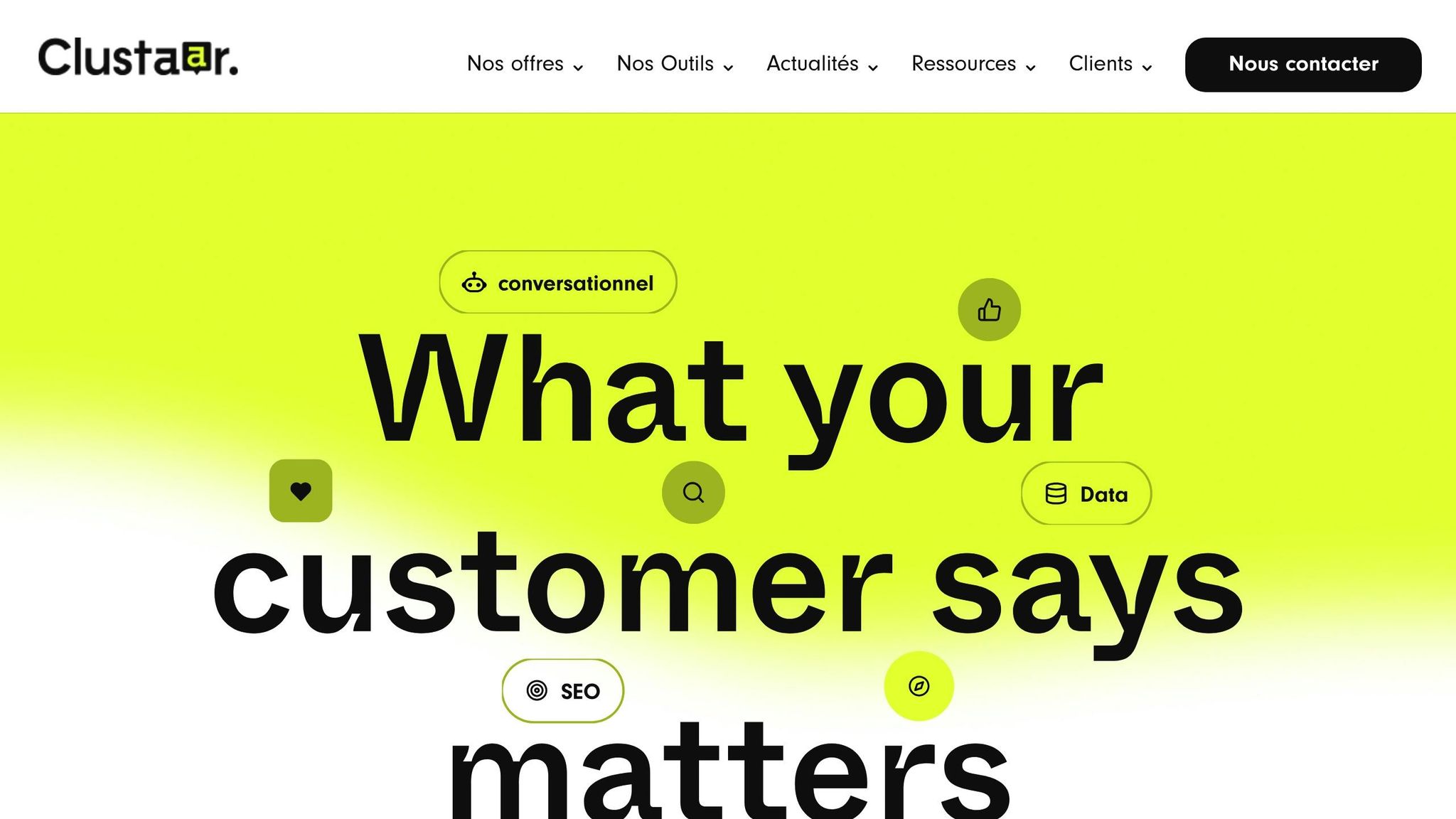
Botpress and Clustaar take different paths when it comes to automation tools. Botpress leans on developer-driven control, while Clustaar offers a no-code, user-friendly approach.
Automation Architecture
| Feature | Botpress | Clustaar |
|---|---|---|
| Core Approach | Code-based workflow design | Visual flow builder |
| Automation Type | Custom NLP pipeline | Pre-built automation blocks |
| Integration | API-first development | No-code connectors |
| Workflow Design | Code required | Drag-and-drop interface |
| Custom Logic | JavaScript modules | Built-in condition blocks |
Workflow Management
Botpress relies on JavaScript for creating workflows. Its workflow engine enables:
- Custom NLP pipelines
- Event triggers
- API integrations, all built through code
Process Automation Features
| Capability | Botpress | Clustaar |
|---|---|---|
| Data Processing | Manual implementation | Built-in data handlers |
| Error Handling | Custom error scripts | Automated fallbacks |
| Multi-language | Manual training required | Auto-translation support |
| Analytics | Basic metrics tracking | Advanced reporting tools |
Development Requirements
To build workflows in Botpress, developers need skills in JavaScript, API integration, NLP, and state management.
Performance Monitoring
| Metric Type | Botpress | Clustaar |
|---|---|---|
| Response Time | Basic timing data | Detailed latency metrics |
| Success Rates | Manual tracking | Automated reporting |
| User Engagement | Custom analytics | Built-in dashboards |
| Error Tracking | Developer tools | Visual error logs |
Automation Limits
| Limitation Type | Botpress | Clustaar |
|---|---|---|
| Concurrent Users | Based on hosting | Fixed by plan |
| API Calls | Self-managed | Usage limits |
| Custom Logic | Unlimited | Template-based |
| Integration Count | No limit | Varies by plan |
Technical Requirements
Once you’ve assessed automation limits and performance metrics, review the technical needs for each platform:
| Requirement | Botpress | Clustaar |
|---|---|---|
| Hosting | Self-hosted/Cloud | Cloud-only |
| Memory | 4GB minimum for workflow processing | N/A (managed) |
| Storage | Based on usage | Included |
| Processing | CPU-dependent | Cloud-based |
Deployment Options
- Self-hosted installation
- Docker container support
- Cloud provider options
- Custom server configurations
10. Botpress vs SnatchBot: Development Options
Botpress takes a developer-focused approach, catering to those with coding skills. It provides a visual flow editor alongside full access to the code. Users need to set up local environments, handle version control manually, and decide between self-hosting or cloud deployment. This makes it a solid choice for projects requiring deep customization.
SnatchBot, in contrast, offers a no-code, cloud-based solution. Its visual builder allows you to design and launch chatbot flows directly from your browser, streamlining the process and cutting down on technical setup and upkeep.
Pick Botpress if you want detailed control and are comfortable with coding. Go with SnatchBot for a quicker, hands-off setup.
Platform Features Comparison
Here’s a side-by-side look at the core features of each platform:
| Feature Category | Botpress | No-Code Platforms |
|---|---|---|
| Development Approach | Open-source; requires coding | Visual builder; no coding needed |
| Learning Curve | Steep – needs technical expertise | Gentle – accessible for non-developers |
| Customization | Extensive through coding | Template-based, less flexible |
| Deployment Options | Self-hosted or cloud | Cloud-based only |
| Cost Structure | Free core, paid enterprise options | Subscription-based pricing |
| Integration Capabilities | Extensive via API/SDK | Pre-built integrations |
| NLP Capabilities | Advanced with full control | Pre-configured models |
| Scalability | High with proper setup | Varies by platform |
Each platform has its strengths and trade-offs. Open-source tools like Botpress provide greater control and customization but require technical expertise. On the other hand, no-code platforms simplify deployment and maintenance, making them a good fit for teams without developers.
Summary and Recommendations
Based on the comparisons above, here’s a simple guide to help you choose the right platform. Your choice should align with your organization’s technical skills and specific needs.
If your team includes developers, open-source platforms like Botpress offer more control over settings and hosting. These platforms allow for custom integrations and adjustments to NLP settings. On the other hand, teams without technical expertise may find no-code platforms more suitable. These tools let you quickly build and manage chatbots using visual interfaces – no coding required.
Here’s a quick breakdown:
| Factor | Key Points |
|---|---|
| Customization & Control | Teams with developers might opt for open-source platforms like Botpress, offering extensive configuration and self-hosting options. |
| Speed & Ease of Use | No-code platforms are ideal for teams that value quick setup and user-friendly interfaces, often leading to reduced costs and improved operations. |
This approach, supported by examples of successful implementations, highlights the importance of choosing a platform that balances technical flexibility with ease of use.
As one user shared:
"The platform is very user‑friendly, even non‑technical people can configure and develop the solution."
- Santosh Kumar, Commercial Services Lead, Healthcare



